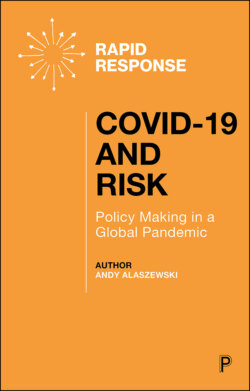Читать книгу COVID-19 and Risk - Alaszewski Andy - Страница 13
На сайте Литреса книга снята с продажи.
Risk and framing
ОглавлениеIn early 2020, COVID-19 was a new disease. Policy makers needed to assess its risk, especially whether it could spread between humans and, if so, how rapidly and the dangerousness of the illnesses caused by such infection. At the start of the pandemic, it was difficult to assess such risks as there was no evidence. The next best alternative was to use evidence from a similar disease. So the question at the start of pandemic was which disease was COVID-19 most like, a process that can be referred to as framing. Erving Goffman (1975), a sociologist, developed the concept of framing and suggested that in any given situation it is the answer to the question: ‘What is going on here?’
When framing a new phenomenon, individuals and groups draw on their knowledge of similar events or situations. They often use personal experience and/or sources such as media representations. When a significant event happens which attracts substantial public and media attention, then it can become a reference point and a frame for similar events in the future. The Glasgow Media Group’s study of mental illness showed how public framing of the risk associated with mentally ill people was shaped by media representations of the dangerousness and violence of such individuals. They observed that individuals in their study tended to accept such representations even when they contradicted their own experiences (Philo, 1996).
